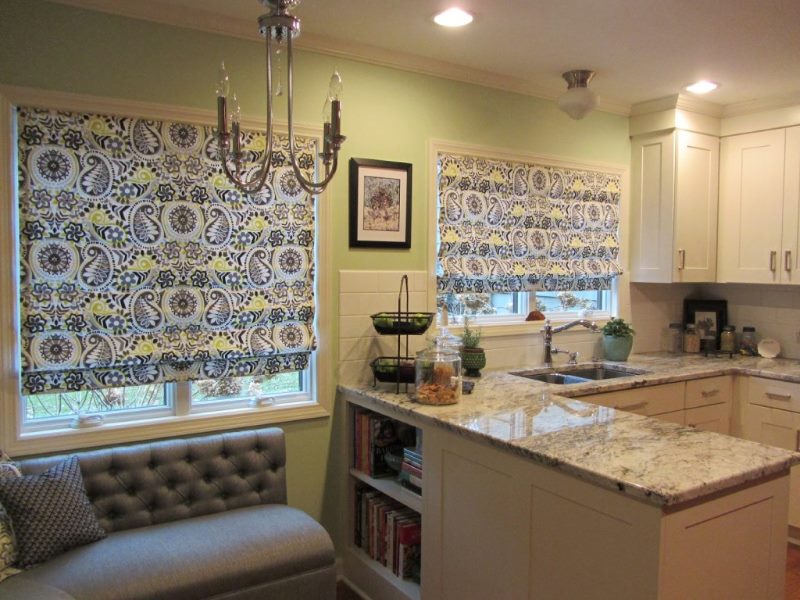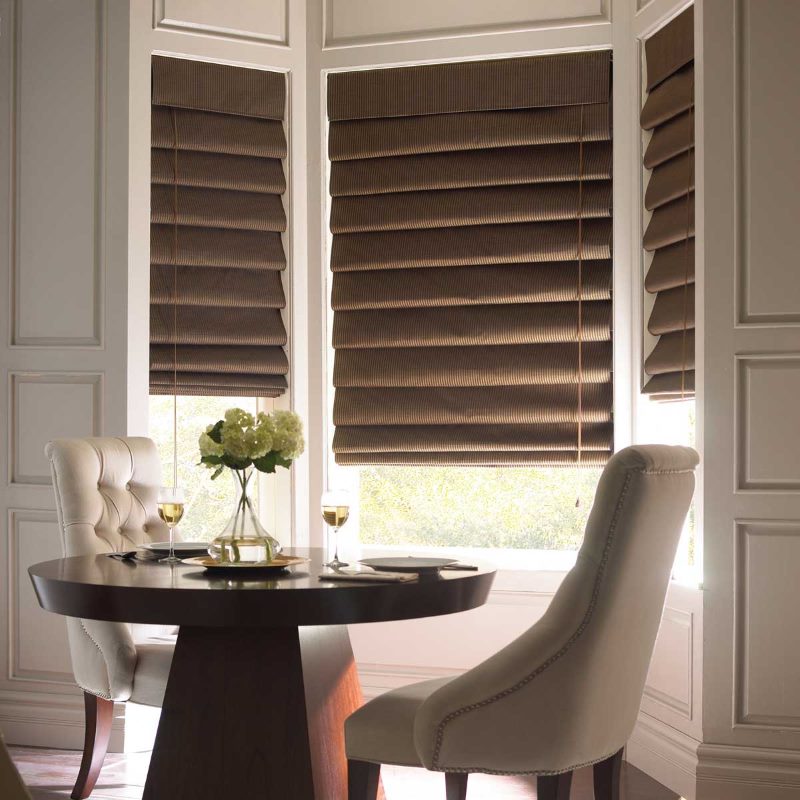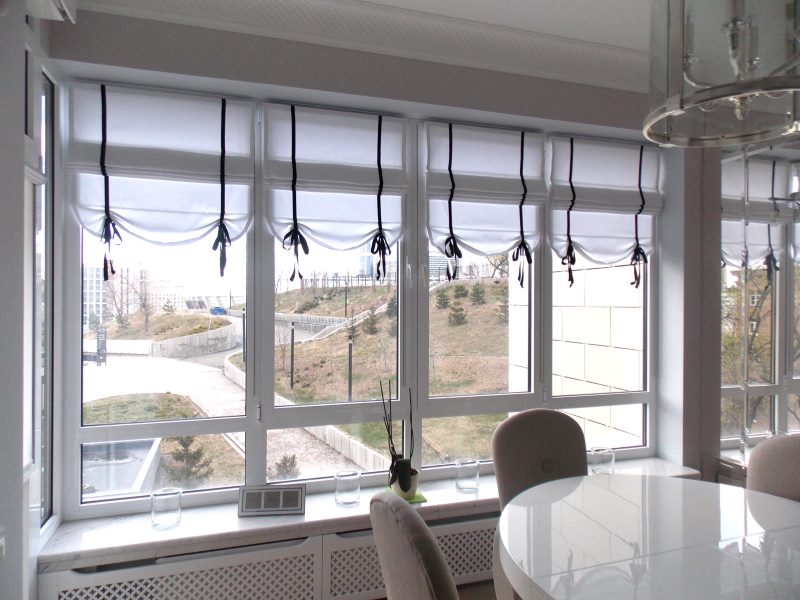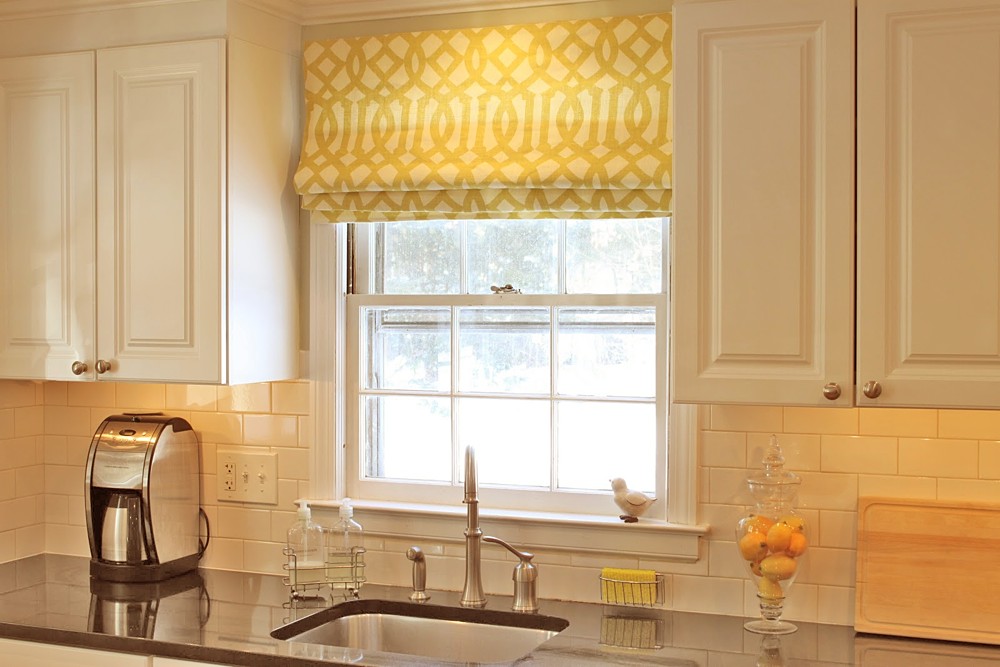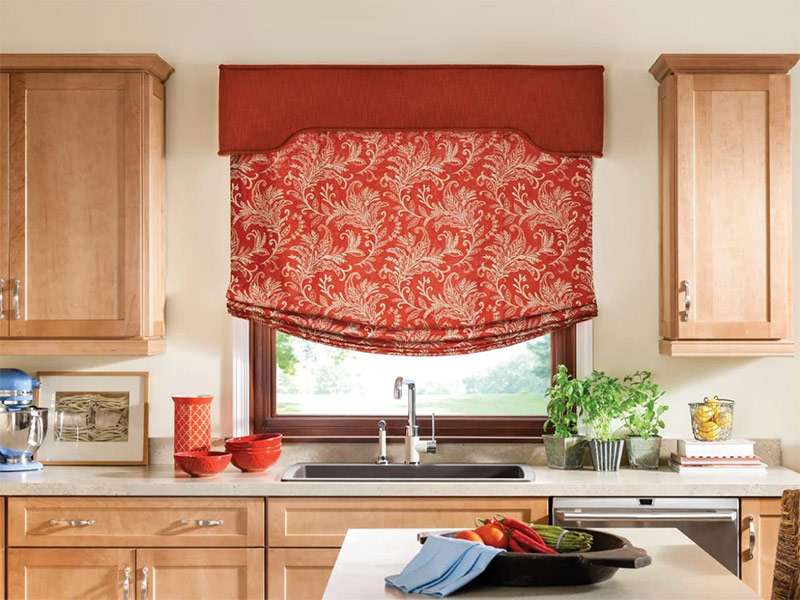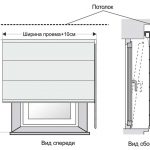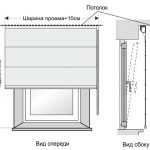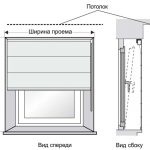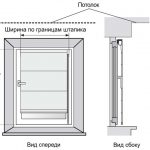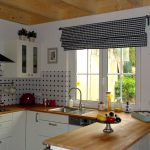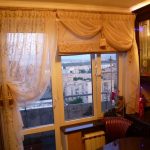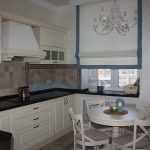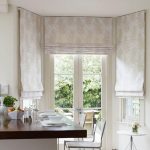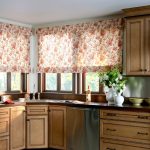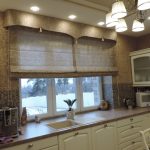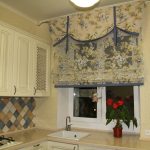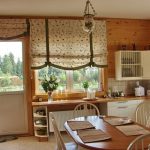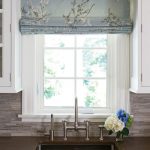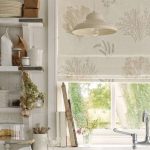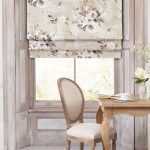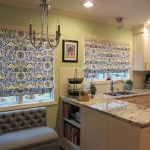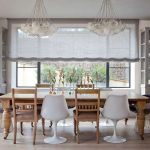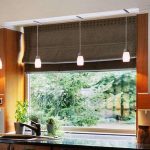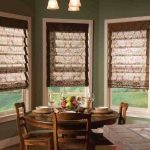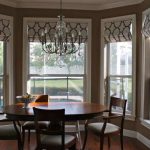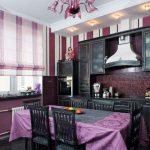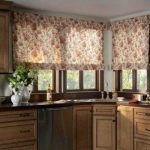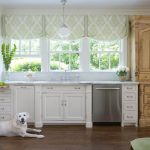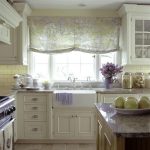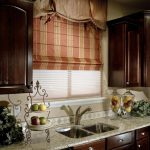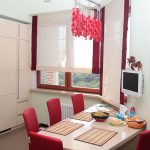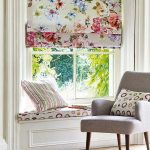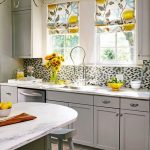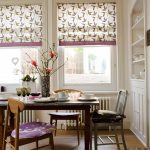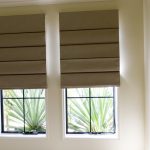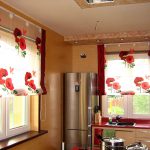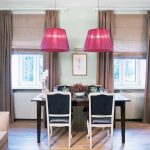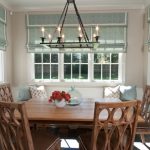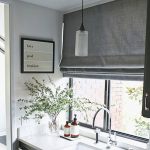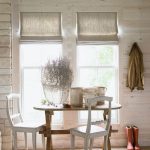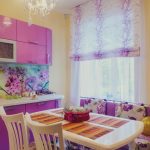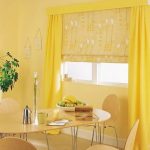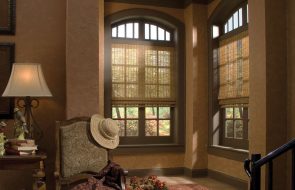When it comes time to decorate a kitchen window, the question arises: what type of curtains is best to choose? Here you need a practical option, easy to care for, with the ability to choose a design that matches the kitchen interior. Not every model can satisfy these needs. Roman blinds are a simple, but at the same time elegant and functional solution to this problem.
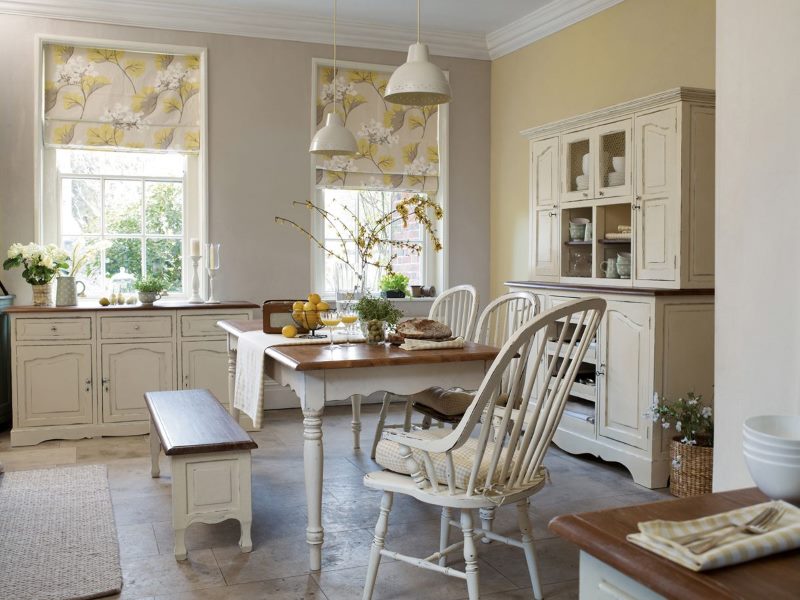
Their distinctive feature is the way the fabric is assembled. Its even horizontal parts are folded in a chain one after another and raised up. It is believed that the history of Roman blinds began in Ancient Rome thousands of years ago, which is why they got their name. The variety of designs and fabrics today makes it possible to use them in interiors of different styles, both in the living room or bedroom, and in the kitchen.
Content
- Roman and roller blinds: what's the difference?
- Roman and roller blinds: comparative characteristics
- Types of models
- Materials
- Roman blinds in the kitchen: ideas + photos
- How to choose roman blinds for the kitchen
- Video on how to make a Roman blind with your own hands
- Photo ideas for decorating a kitchen window with Roman blinds
Roman and roller blinds: what's the difference?
The names of these types of structures are often confused. They do sometimes look very similar, representing a canvas whose level relative to the window opening is adjusted vertically. The canvases can be unfolded to cover the window completely. But the structures have fundamental differences.
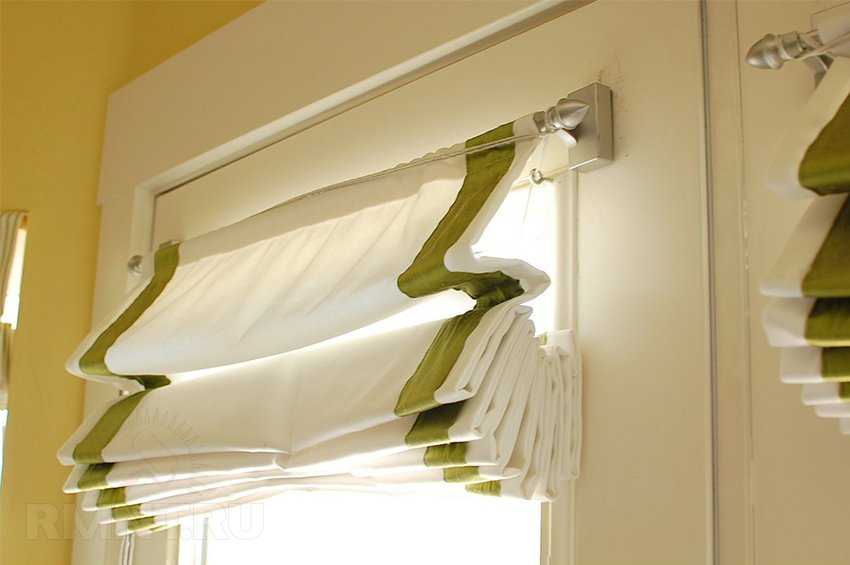
The main difference between roller blinds and Roman blinds is that they twist when lifted, forming a roller. The folds of Roman blinds are superimposed one on top of the other in turn, and when lifted, resemble an accordion. Most types of construction have several special inserts inside the fabric, which serve for its correct draping. A roller blind is a flat, solid piece of fabric without any additional inserts, except for a weight at the bottom.
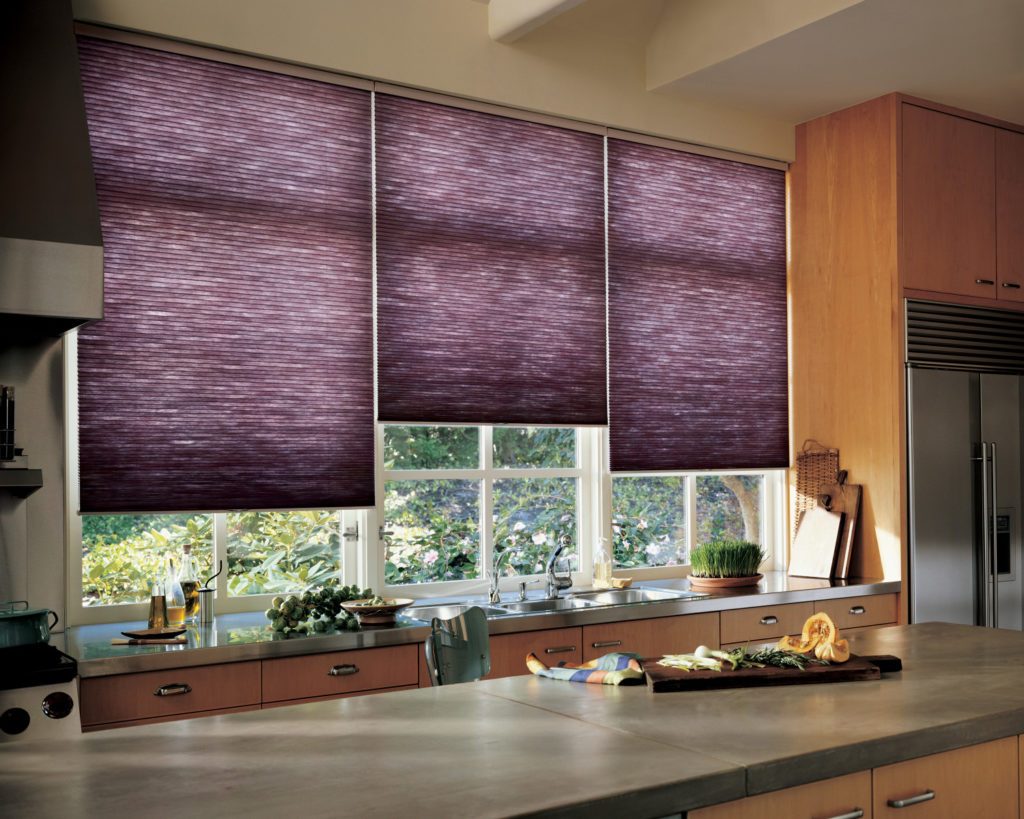
For closed-type roller blinds, a special box is installed under the ceiling, where the rolled-up fabric will be hidden. In open-type designs, the roller blind is rolled into a roller, which remains visible. Closed designs are not provided for Roman blinds. They are attached to a cornice equipped with a mechanism that provides lifting, lowering and fixing of the fabric. When assembled, they will not completely open the window opening, a small part at the top will remain hidden.
The procedure for cleaning roller blinds is quite complicated and time-consuming. It is strictly not recommended to wash them in an automatic washing machine. Roman blinds are somewhat easier to care for. Products made from some types of fabric can be washed in a washing machine using the delicate wash mode.

In terms of cost, roller blinds are more affordable than Roman blinds.
Roman blinds are an ideal option for decorating a home interior, while roller blinds are more modern and are also suitable for offices, cafes, restaurants, and shops. If you want to make the atmosphere of the room more comfortable, then Roman blinds are the best choice.
Roman and roller blinds: comparative characteristics
| Roman | Roller blinds |
| Fabric with special rod inserts that form even horizontal folds | Smooth, solid canvas |
| They are attached to the cornice and fold like an accordion when raised. | Rolled; design – open or closed with a box |
| Machine washable | Hand cleaning only |
| Higher price | There are economical options |
| More suitable for home | Can be used at home, office, store, etc. |
Advantages of Roman blinds:
- simple design that you can make yourself;
- not as difficult to care for as roller blinds: machine washable;
- create a cozy atmosphere and look homey.
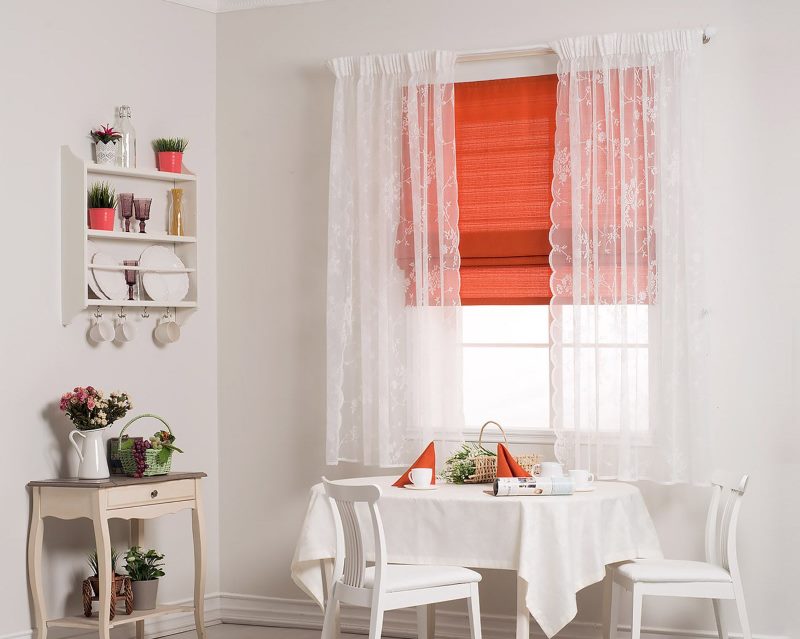
The design includes the following elements:
- rectangular canvas;
- rods that fix the folds;
- lifting mechanism + control chain;
- weight on the bottom fold.
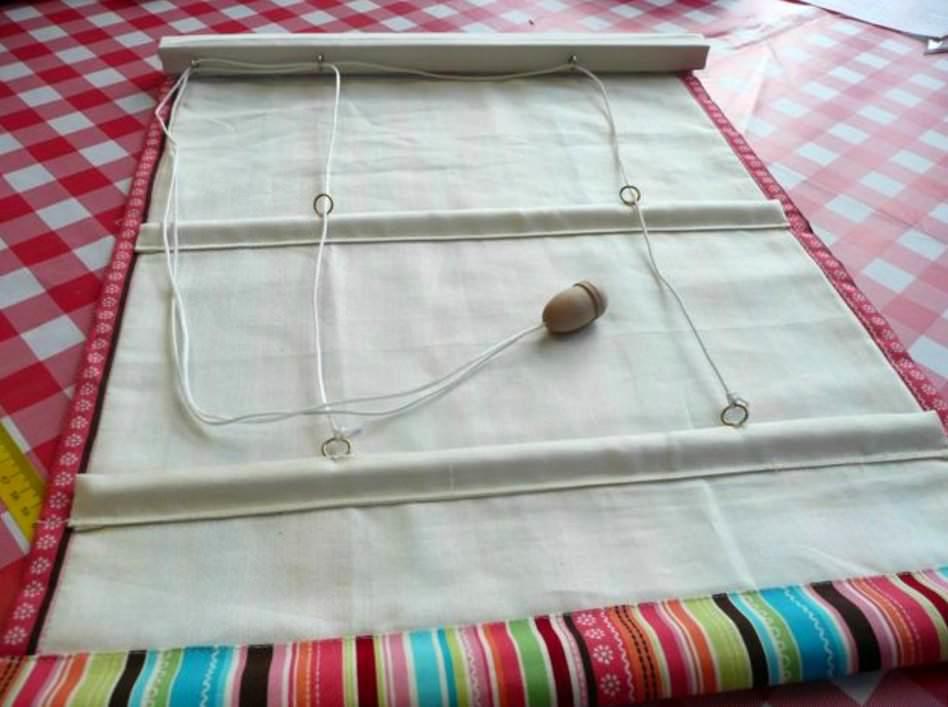
Types of models
Modern models of Roman blinds are divided into three main types:
- Classic. They have a rigid frame that forms horizontal folds; when completely closed, they form a flat canvas.
Classic Roman blinds have crossbars to create even, uniform folds. - Cascading. When the curtain is lowered, voluminous folds are formed, which, layered on top of each other, create a beautiful cascade.
Cascading curtains form beautiful folds even when unfurled. - Frameless. The canvas has no rods, so when unfolded it is completely flat. The folds hang in waves downwards, towards its center.
In frameless curtains, the fabric is gathered without guides on the sides or in the center
Materials
The canvases can be made of fabrics of different density: from jacquard materials to tulle. Accordingly, they will have different degrees of light transmission and different purposes. When sewing Roman blinds, natural materials (linen, cotton) or synthetic (polyester) can be used. Mixed fabrics are also used, which include several different types of fibers.
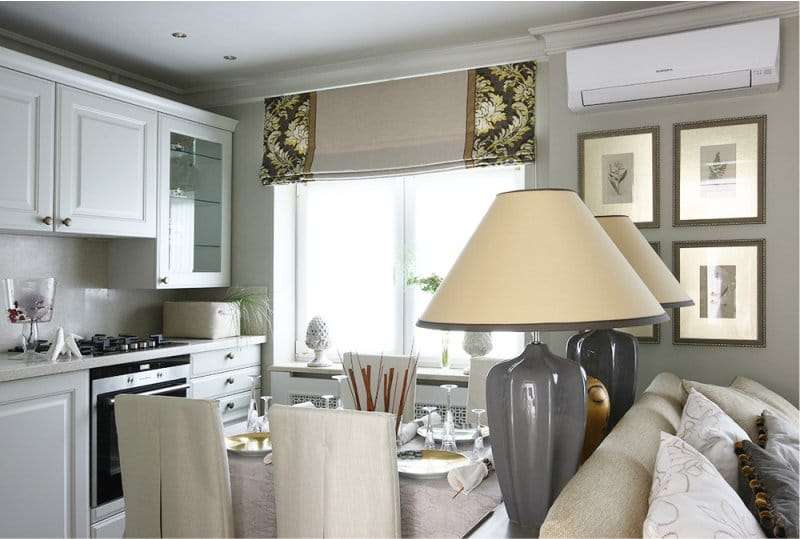
Roman blinds can be made from non-woven materials such as bamboo.
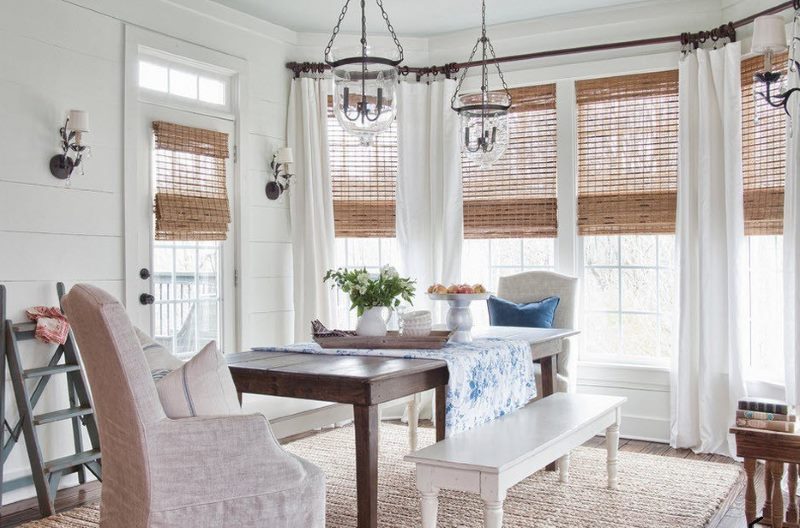
Roman blinds in the kitchen: ideas + photos
This type of curtains can be applied to almost any style. You just need to choose colors that harmonize with the room's design and select the type of model.
Roman blinds in a classic kitchen interior in the photo:
- You can use them as an alternative to tulle curtains. This is quite a practical option, especially when there are flowers on the windowsill: the length can be adjusted as you like.
- Floral patterns will create a cozy and calm atmosphere in the kitchen.
- Choosing a bright color for curtains will help to create additional accents.
Roman blinds are very elegant and fit perfectly into a classic interior. - Or you can use more modest geometric patterns.
- Frameless model of Roman blinds in the kitchen.
Frameless Roman blind with lambrequin
How to choose roman blinds for the kitchen
If you decide to purchase them for the design of the kitchen, pay attention to several parameters when choosing. This is the size of the canvas, then the material, type of construction and design.
Size
First, you need to measure the length and width of the window opening, and it is important to decide on the option for installing the curtains:
Important! It is better to write down these parameters - you will use them when further searching for a suitable curtain model.
Type of fabric
Each type of material has its own unique features and properties.
Flax is a natural material, usually used unpainted for sewing curtains. It has average light transmittance. It is perfect for ethnic or Provence styles.
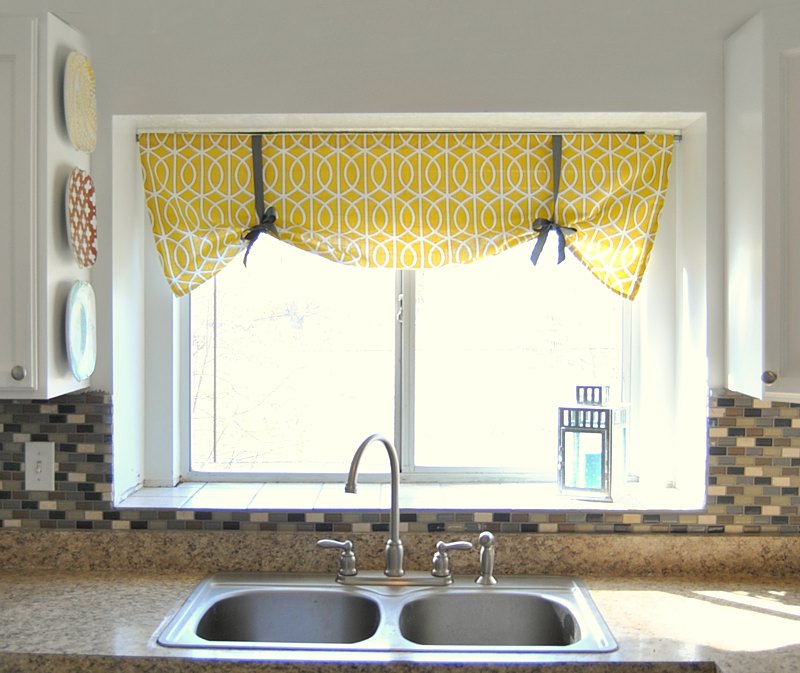
The durable, wear-resistant material holds its shape well, but it has a drawback: if creases form after washing, they will be almost impossible to smooth out.
Please note! After washing linen curtains, you must immediately hang them on the window and dry them in this way to avoid creases.
Cotton is rarely used to make curtains in its pure form; synthetic fibers are usually added. It is a fairly soft fabric in a variety of colors. Disadvantages of cotton: shrinkage after washing, susceptibility to sun exposure; the fabric wrinkles easily.
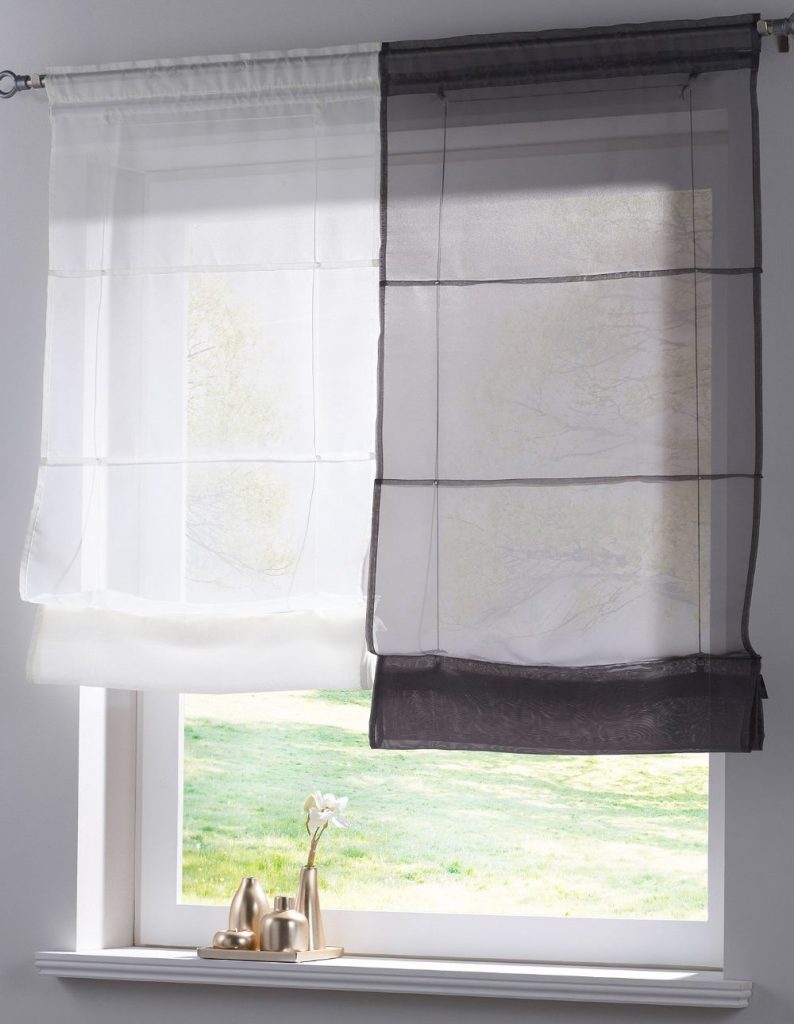
Synthetic fabrics (polyester or nylon) have their own special advantages. They are a variety of colors and textures, lightness, and varying light transmittance. They practically do not wrinkle; they are easy to care for.
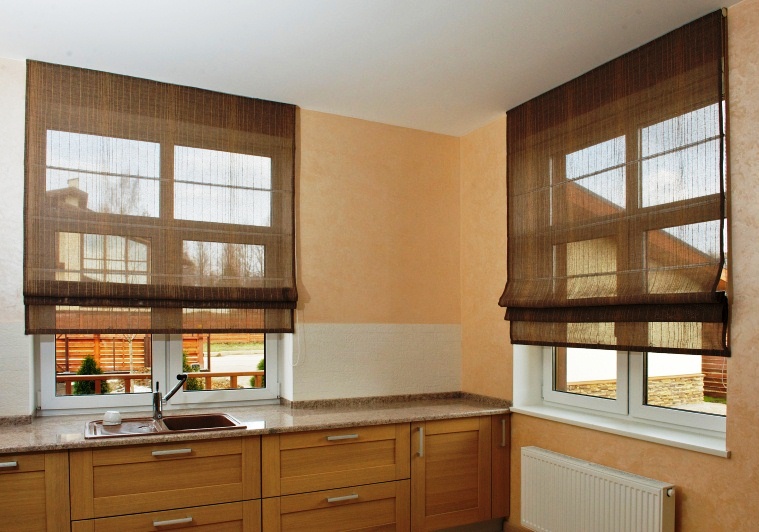
Blended fabrics are materials made from a mixture of different fibers. Combinations of natural and synthetic materials are possible, for example, cotton and polyester. Such fabrics combine the advantages of their components.
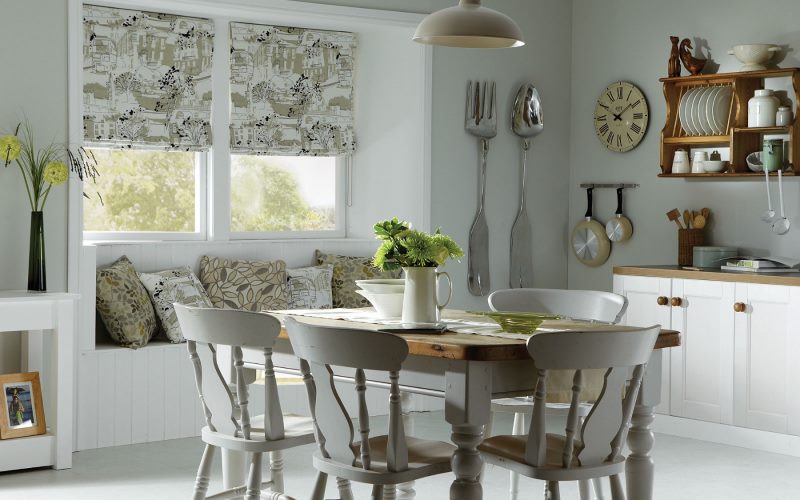
Regarding the light transmittance property:
- jacquard, satin allow light to pass through;
- translucent fabrics: cotton, linen, crepe satin;
- Veils and organza allow daylight to pass through completely.
Design
Once you have decided on the light transmittance and material of the fabric, it is time to move on to choosing the pattern. Here, much depends on the overall style of the room, its color scheme. It is necessary to take into account the colors of the wallpaper, kitchen set, furniture.
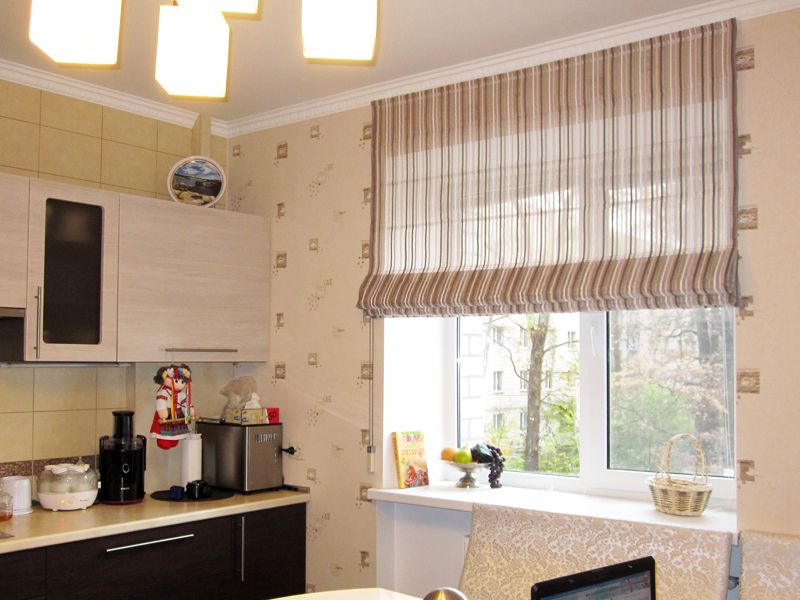
For a small space, it is better to choose light, calm colors: beige, peach, lilac, light green, sky blue. Monochrome canvases are preferable, a minimum of patterns.
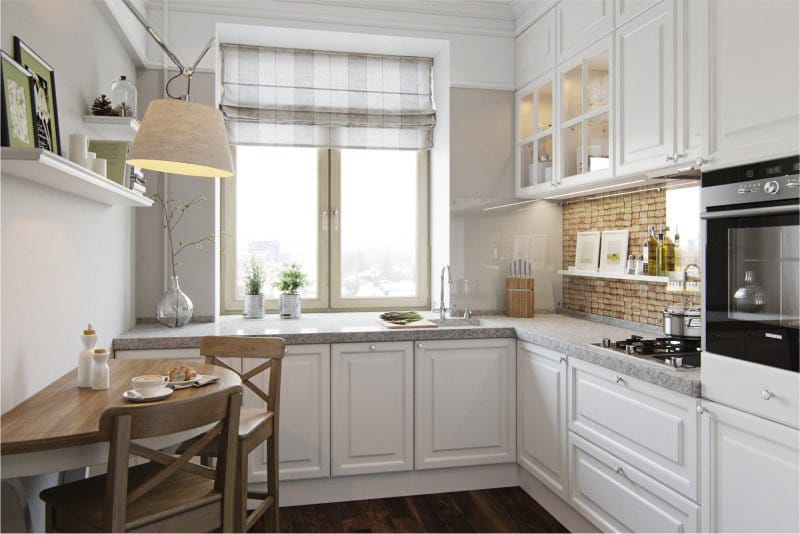
For more spacious rooms, you can try using dark shades: rich blue, grassy or red; experiment with bright patterns: flowers, geometry or a solid composition of the design.
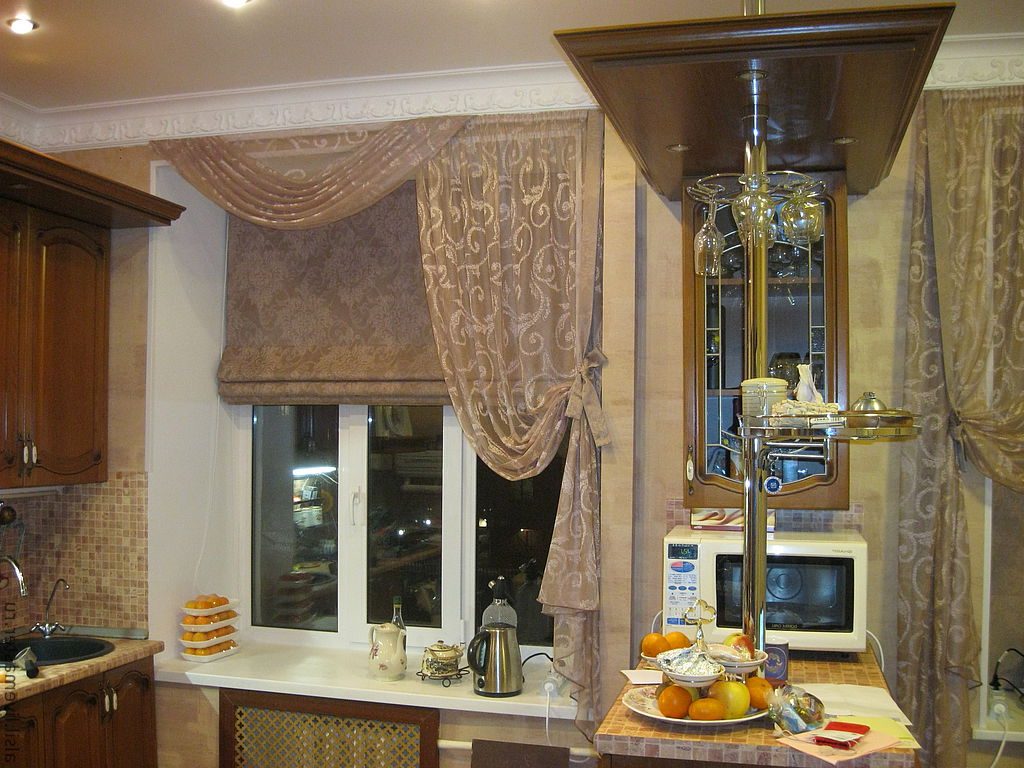
Important! Warm shades can visually reduce space, while cold shades can expand it.
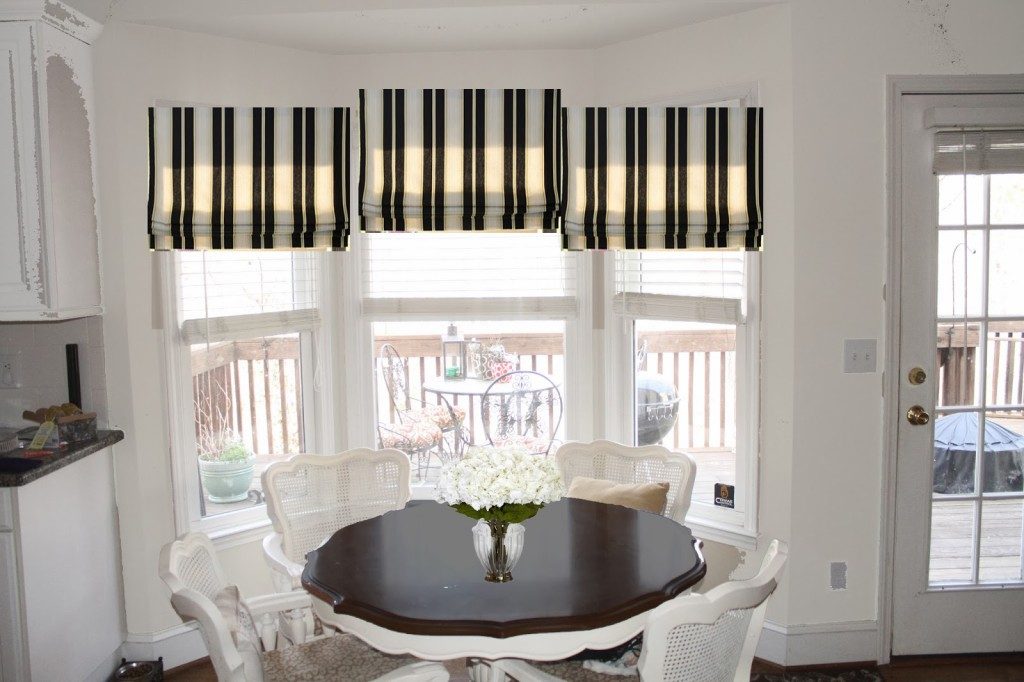
In minimalist kitchens, where white plays the main role, you can safely use rich colors of curtains: they will act as accents. If your kitchen has bright wallpaper or furniture, you should choose a harmonious shade more carefully. Sometimes it is better not to overload the space with flashy patterns, but to choose a single-color canvas. Modest pastel colors will look boring; it is better to choose a shade close to the colors present in the interior, or to stop at white.
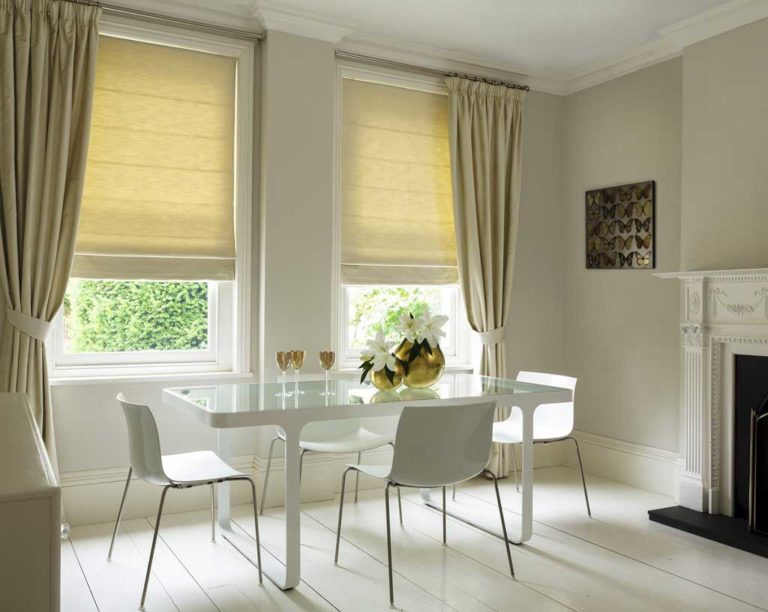
Important! Decorating a window in a color close to the wallpaper tone will visually expand the space, while a contrasting color can reduce it.
The type of construction is selected according to the overall style of the room. For example, cascade models are combined with a classic style. The classic type of Roman blinds is suitable for rooms in modern styles. Frameless models look original and attract attention. For example, a linen model will suit a Provence-style interior.
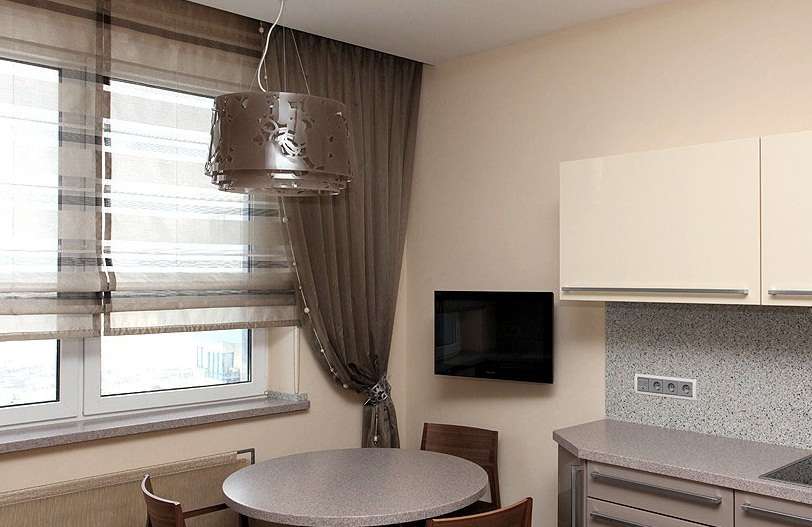
Now you can easily distinguish Roman blinds from roller blinds, choose the right model, material, and also select a stylish design of curtains that will decorate your kitchen.

